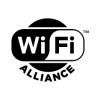Most US homes have on average at least a dozen connected Internet of Things (IoT) devices — a number that could eventually exceed a hundred, with 27 billion IoT devices expected to reach the market by 2025.[1] To support the performance requirements of this many devices, it will be necessary to leverage Wi-Fi® networks to minimize interference and optimize coverage by providing good oversight and management.
Product developers should consider several technology trends at play in the residential space as they make connectivity decisions for Home IoT products and applications.
Integrating Home IoT products for simplicity and performance
The Home IoT marketplace is shifting away from individually sold smart devices toward integrated experiences and solutions. The interconnection of groups of IoT products — potentially sold and managed by internet service providers (ISPs) looking to provide new value — would include links to cloud services, smartphone apps, and the wider Internet. These links place higher demands on the in-home connectivity layer, with Wi-Fi’s importance increasing relative to other technologies, especially since these managed services packages would emphasize intensive data gathering and analytics.
External connections drive the need for robust security
Certain IoT devices in the home are beginning to connect to external stakeholder groups such as healthcare agencies, employers, utility companies, and local authorities — often using cameras, realtime sensors, and high-definition screens. This shift underlines the importance of reliability and cybersecurity, including end-to-end encryption and virtual private networks (VPNs), and is driving the need for more up to date IP connectivity and authentication. The ability to update Home IoT device firmware and software is also necessary. Additional data volume, as well as tighter latency requirements, will orient developers’ connectivity choices toward Wi-Fi.
Smartphones control Home IoT devices and systems
An increasing trend in Home IoT is the use of smartphone apps as device and system controllers. There are multiple roles emerging:
- Connecting Home IoT devices to the Wi-Fi network
- Mapping Wi-Fi coverage and positioning mesh nodes as needed
- Accessing devices such as locks or security cameras while away from home
- Troubleshooting malfunctioning devices
- Contacting customer support or browsing online help forums
- Monitoring performance, energy consumption, and operational status
- Linking devices into groups or subsystems
Home Wi-Fi upgrades enable massive speed increases
During the pandemic, many users upgraded their connectivity infrastructure to include high quality, whole home Wi-Fi, often by using mesh capabilities. This, in tandem with excellent broadband access through fiber or cable connections, allows for speeds exceeding 1 Gigabit per second (Gbps), making it feasible to support multiple home workers and children conducting their education from home. To enable these higher-end broadband connections, ISPs are increasingly providing Wi-Fi 6 and Wi-Fi 6E gateways. Some homeowners and renters also used the remote work opportunity to add new devices to their home for either security or entertainment purposes, making reliable, fast connections even more expedient.
As the pandemic fades, the legacy of up-to-date Wi-Fi installations will continue, especially as service providers continue to upgrade broadband infrastructure as a result of stimulus funding and national planning.
Conclusion
The net outcome of these trends is clear — connected Home IoT devices will need to be “good Internet citizens” in a wide context, often with greater flows of data than in the past and with higher requirements for performance and security. This will demand faster and more reliable networks, as well as greater interoperability.
As a result of the organic increase of the whole home Wi-Fi installed base and a greater awareness of mesh and other new capabilities, Wi-Fi is steadily growing its addressable market and is the obvious choice of technology for Home IoT devices.
[1] IoT Analytics, 2022
The statements and opinions by each Wi-Fi Alliance member and those providing comments are theirs alone, and do not reflect the opinions or views of Wi-Fi Alliance or any other member. Wi-Fi Alliance is not responsible for the accuracy of any of the information provided by any member in posting to or commenting on this blog. Concerns should be directed to info@wi-fi.org.




Add new comment